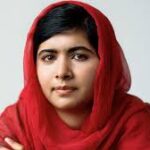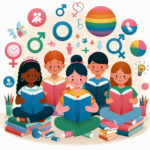Lihaaf (The Quilt): A Short Story by Ismat Chughtai
Lihaaf is a groundbreaking short story by Ismat Chughtai that explores female desire, sexuality, power dynamics, and societal norms, challenging prevalent gender and sexuality norms of the time.
The story is narrated by an unnamed girl who is the niece of the central character of the story, Begum Jaan. Begum Jaan, as we are told, is a beautiful woman who has had a difficult life after marriage. Her husband, the Nawab, is much older than her and is held in high respect for never having visited prostitutes, which was a common practice among the males of the royal households.
Begum Jaan longs for love that has never been fulfilled by the Nawab. She becomes close to her maid, Rabbu, who provides her with oil massages and helps her regain her old glow. A little girl notices Begum Jaan and Rabbu’s relationship closely. At night, the little girl notices Begum’s quilt shaking vigorously, hinting at a sexual relationship between Begum and Rabbu. Begum’s sensuous breaths and intimate touches reveal their connection. When Rabbu leaves, Begum’s attention falls on the little girl, making her uncomfortable.
Branded as a feminist text, “Lihaaf” was controversial for its exploration of female sexuality, repressed desires, and the examination of another’s body. Chughtai faced an obscenity trial for it, but the text has always remained at the forefront of feminism. Ismat is seen challenging patriarchy through her powerful writings.
Ismat Chughtai is an iconic figure in modern Urdu literature and has made an indelible mark with her thought-provoking works. Ismat’s writings are known for the subversion of norms. She was born as a rebel, and her texts challenge heterosexuality, heteronormativity, and gender relations, giving voice to those who are often silenced. She writes about forbidden topics, providing insight into the lives of women living in Muslim households who are silenced about their struggles, desires, and frustrations by the tape of morality. Her writings closely observe the role of gender and sexuality in culture.


